Practical Evaluation of Loss Reduction in Isolated Series Resonant Converter with Fixed Frequency Modulation
Abstract
:1. Introduction
- Soft switching capability from zero to full load range of the proposed converter leads to low primary switch turn off currents and switching loss.
- With high input voltage, high efficiency can be achieved.
- It enables zero impedance at resonant frequency, which is highly desirable.
- Compared with other resonant DAB topologies, it employs a smaller number of passive components in the resonant tank and hence facilitates the size reduction, and higher power density can be achieved.
- Saturation of the inductor and transformer, which is one of the main issues, can be avoided with the help of the capacitor employed in the resonant tank of the proposed converter.
- Moreover, the performance of topology is further boosted by employing an advance modulation technique.
- A DAB converter is proposed in this paper, which fulfills the galvanic isolation requirement by employing a high-frequency center-tapped transformer between the primary and secondary sides. The primary side consists of a full bridge topology and a resonant tank for soft switching and at the secondary side pairs of anti-series MOSFETs are employed at both ends of the center-tapped transformer, which blocks the reverse current.
- A novel modulation scheme that is based on the FFM is employed and verified. With the implementation of the proposed modulation scheme in discontinuous conduction mode (DCM), the performance of the converter is considerably improved due to reduced power losses, as the switching losses are minimized with the help of soft switching, and the conduction losses are reduced by blocking the reverse current.
- The proposed modulation method extends the voltage gain of the converter without compromising the soft switching or adding any complexity to the modulation method. Therefore, improved reliability and voltage gain are achieved in this research without employing any auxiliary components.
2. Background of the Suggested Converter
2.1. Proposed Converter
2.2. Fixed Frequency Modulation (FFM)
3. Operation Modes of the Proposed Converter
3.1. Stage 1
3.2. Stage 2
3.3. Stage 3
3.4. Stage 4
3.5. Stage 5
3.6. Stage 6
4. Design of the Closed Loop Current Control
5. Converter Power Losses
5.1. Conduction Losses Calculation
5.2. Switching Losses Calculation
5.3. Efficiency
6. Simulation Results
7. Experimental Results
8. Conclusions
Author Contributions
Funding
Institutional Review Board Statement
Informed Consent Statement
Data Availability Statement
Acknowledgments
Conflicts of Interest
References
- Ali Khan, M.Y.; Liu, H.; Yang, Z.; Yuan, X. A Comprehensive Review on Grid Connected Photovoltaic Inverters, Their Modulation Techniques, and Control Strategies. Energies 2020, 13, 4185. [Google Scholar] [CrossRef]
- Tahir, M.; Ahmed Khan, S.; Khan, T.; Waseem, M.; Khan, D.; Annuk, A. More electric aircraft challenges: A study on 270 V/90 V interleaved bidirectional DC–DC converter. Energy Rep. 2022, 8, 1133–1140. [Google Scholar] [CrossRef]
- Salem, A.; Ahmed, E.M.; Orabi, M.; Ahmed, M. Study and Analysis of New Three-Phase Modular Multilevel Inverter. IEEE Trans. Ind. Electron. 2016, 63, 7804–7813. [Google Scholar] [CrossRef]
- Waseem, M.; Lin, Z.; Liu, S.; Zhang, Z.; Aziz, T.; Khan, D. Fuzzy compromised solution-based novel home appliances scheduling and demand response with optimal dispatch of distributed energy resources. Appl. Energy 2021, 290, 116761. [Google Scholar] [CrossRef]
- Waseem, M.; Lin, Z.; Liu, S.; Sajjad, I.A.; Aziz, T. Optimal GWCSO-based home appliances scheduling for demand response considering end-user’s comfort. Electr. Power Syst. Res. 2020, 187, 106477. [Google Scholar] [CrossRef]
- Doncker, R.W.A.A.D.; Divan, D.M.; Kheraluwala, M.H. A three-phase soft-switched high-power-density DC/DC converter for high-power applications. IEEE Trans. Ind. Appl. 1991, 27, 63–73. [Google Scholar] [CrossRef]
- Aziz, T.; Lin, Z.; Waseem, M.; Liu, S. Review on optimization methodologies in transmission network reconfiguration of power systems for grid resilience. Int. Trans. Electr. Energy Syst. 2021, 31, e12704. [Google Scholar] [CrossRef]
- Sun, X.; Wang, Z.; Zhang, Q.; Chen, G. Variable frequency triple-phase-shift modulation strategy for minimizing RMS current in dual-active-bridge DC-DC converters. J. Power Electron. 2021, 21, 296–307. [Google Scholar] [CrossRef]
- Rizwan, M.; Waseem, M.; Liaqat, R.; Sajjad, I.A.; Dampage, U.; Salmen, S.H.; Obaid, S.A.; Mohamed, M.A.; Annuk, A. SPSO Based Optimal Integration of DGs in Local Distribution Systems under Extreme Load Growth for Smart Cities. Electronics 2021, 10, 2542. [Google Scholar] [CrossRef]
- Tahir, M.; Hu, S.; He, X. Performance Improvement Strategies for Discrete Wide Bandgap Devices: A Systematic Review. Front. Energy Res. 2021, 711. [Google Scholar] [CrossRef]
- Waseem, M.; Sajjad, I.A.; Napoli, R.; Chicco, G. Seasonal Effect on the Flexibility Assessment of Electrical Demand. In Proceedings of the 2018 53rd International Universities Power Engineering Conference (UPEC), Glasgow, UK, 4–7 September 2018; pp. 1–6. [Google Scholar]
- Khan, D.; Khan, M.M. An Improved Capacitor Current Active Damping Based on Parallel Feed-Forward Compensation Method for LCL Filtered Grid Connected Inverter. In Proceedings of the 2019 4th International Conference on Information Systems Engineering (ICISE), Shanghai, China, 4–6 May 2019; pp. 68–75. [Google Scholar]
- Khan, T.; Yu, M.; Waseem, M. Review on recent optimization strategies for hybrid renewable energy system with hydrogen technologies: State of the art, trends and future directions. Int. J. Hydrogen Energy 2022, 47, 25155–25201. [Google Scholar] [CrossRef]
- Liu, F.; Chen, Y.; Chen, X. Comprehensive Analysis of Three-Phase Three-Level LC-Type Resonant DC/DC Converter With Variable Frequency Control—Series Resonant Converter. IEEE Trans. Power Electron. 2017, 32, 5122–5131. [Google Scholar] [CrossRef]
- Krismer, F.; Kolar, J.W. Efficiency-Optimized High-Current Dual Active Bridge Converter for Automotive Applications. IEEE Trans. Ind. Electron. 2012, 59, 2745–2760. [Google Scholar] [CrossRef]
- Li, Y.; Wang, Y.; Song, H. Bidirectional DC-DC Converter based on CLC network. In Proceedings of the 2019 22nd International Conference on Electrical Machines and Systems (ICEMS), Harbin, China, 11–14 August 2019; pp. 1–4. [Google Scholar]
- Mustafa, M.; Rizwan, M.; Kashif, M.; Khan, T.; Waseem, M.; Annuk, A. LC Passive Wireless Sensor System Based on Two Switches for Detection of Triple Parameters. Sensors 2022, 22, 3024. [Google Scholar] [CrossRef] [PubMed]
- Mansouri, S.; Afjei, E. Performance improvement on dual active bridge converter using CLLC resonant network with separated capacitor and inductor. In Proceedings of the 2017 Iranian Conference on Electrical Engineering (ICEE), Tehran, Iran, 2–4 May 2017; pp. 1032–1036. [Google Scholar]
- Niu, J.; Wu, X.; Wang, Y.; Jing, L.; Zhang, W.; Tong, Y. Backward Step-Up Control Strategy for Bidirectional LLC Resonant Converter. Energies 2022, 15, 4471. [Google Scholar] [CrossRef]
- Escudero, M.; Kutschak, M.A.; Pulsinelli, F.; Rodriguez, N.; Morales, D.P. On the practical evaluation of the switching loss in the secondary side rectifiers of LLC converters. Energies 2021, 14, 5915. [Google Scholar] [CrossRef]
- Hao, W.; Ping, W.; Yaohua, L. A control method for series resonant dual active bridge DC/DC converter. In Proceedings of the 2014 IEEE Conference and Expo Transportation Electrification Asia-Pacific (ITEC Asia-Pacific), Beijing, China, 31 August–3 September 2014; pp. 1–5. [Google Scholar]
- Shakib, S.M.S.I.; Mekhilef, S. A Frequency Adaptive Phase Shift Modulation Control Based LLC Series Resonant Converter for Wide Input Voltage Applications. IEEE Trans. Power Electron. 2017, 32, 8360–8370. [Google Scholar] [CrossRef]
- Iqbal, M.M.; Sajjad, I.A.; Manan, A.; Waseem, M.; Ali, A.; Sohail, A. Towards an Optimal Residential Home Energy Management in Presence of PV Generation, Energy Storage and Home to Grid Energy Exchange Framework. In Proceedings of the 2020 3rd International Conference on Computing, Mathematics and Engineering Technologies (iCoMET), Sukkur, Pakistan, 29–30 January 2020; pp. 1–7. [Google Scholar]
- Rizwan, M.; Hong, L.; Waseem, M.; Ahmad, S.; Sharaf, M.; Shafiq, M. A Robust Adaptive Overcurrent Relay Coordination Scheme for Wind-Farm-Integrated Power Systems Based on Forecasting the Wind Dynamics for Smart Energy Systems. Appl. Sci. 2020, 10, 6318. [Google Scholar] [CrossRef]
- Qu, P.; Li, Z.; Wang, P.; Li, Y. An improved analysis considering harmonic components for high-frequency isolated dual-active-bridge series resonant DC-DC converter. In Proceedings of the 2014 IEEE Conference and Expo Transportation Electrification Asia-Pacific (ITEC Asia-Pacific), Beijing, China, 31 August–3 September 2014; pp. 1–4. [Google Scholar]
- Tong, A.; Hang, L.; Li, G.; Zhu, M.; Xie, D. Common duty ratio control of series resonant dual active bridge converter. In Proceedings of the 2016 IEEE 2nd Annual Southern Power Electronics Conference (SPEC), Auckland, New Zealand, 5–8 December 2016; pp. 1–5. [Google Scholar]
- Safaee, A.; Jain, P.; Bakhshai, A. Time-domain analysis of a wide-range dual-active-bridge bidirectional series resonant converter. In Proceedings of the IECON 2015—41st Annual Conference of the IEEE Industrial Electronics Society, Yokohama, Japan, 9–12 November 2015; pp. 004139–004145. [Google Scholar]
- Sato, F.; Shimada, T.; Ouchi, T. Novel Switching Control Method for Full-Bridge DC-DC Converters for Improving Light-Load Efficiency Using Reverse Recovery Current. In Proceedings of the 2018 International Power Electronics Conference (IPEC-Niigata 2018-ECCE Asia), Niigata, Japan, 20–24 May 2018; pp. 250–255. [Google Scholar]
- Chen, J.J.; Lin, B.R. Analysis of ZVS/ZCS soft-switching dual-resonant converter. In Proceedings of the 2009 International Conference on Power Electronics and Drive Systems (PEDS), Taipei, Taiwan, 2–5 November 2009; pp. 411–416. [Google Scholar]
- Ulissi, G.; Kucka, J.; Vemulapati, U.R.; Stiasny, T.; Dujic, D. Resonant IGCT Soft-Switching: Zero-Voltage Switching or Zero-Current Switching? IEEE Trans. Power Electron. 2022, 37, 10775–10783. [Google Scholar] [CrossRef]
- Musavi, F.; Craciun, M.; Gautam, D.S.; Eberle, W.; Dunford, W.G. An LLC resonant DC-DC converter for wide output voltage range battery charging applications. IEEE Trans. Power Electron. 2013, 28, 5437–5445. [Google Scholar] [CrossRef]
- Liu, S.; Zhang, F. State variable derivation with numerical approach and efficiency optimisation method for phase-shift LLC converters under wide voltage-gain range. IET Power Electron. 2019, 12, 1752–1762. [Google Scholar] [CrossRef]
- Vu, H.; Choi, W. A novel dual full-bridge LLC resonant converter for CC and CV charges of batteries for electric vehicles. IEEE Trans. Ind. Electron. 2018, 65, 2212–2225. [Google Scholar] [CrossRef]
- Spaziani, L. A study of MOSFET performance in processor targeted buck and synchronous rectifier buck converters. In Proceedings of the HFPC Power Conversion Proc, Las Vegas, NV, USA, 6–8 January 1996; pp. 123–137. [Google Scholar]

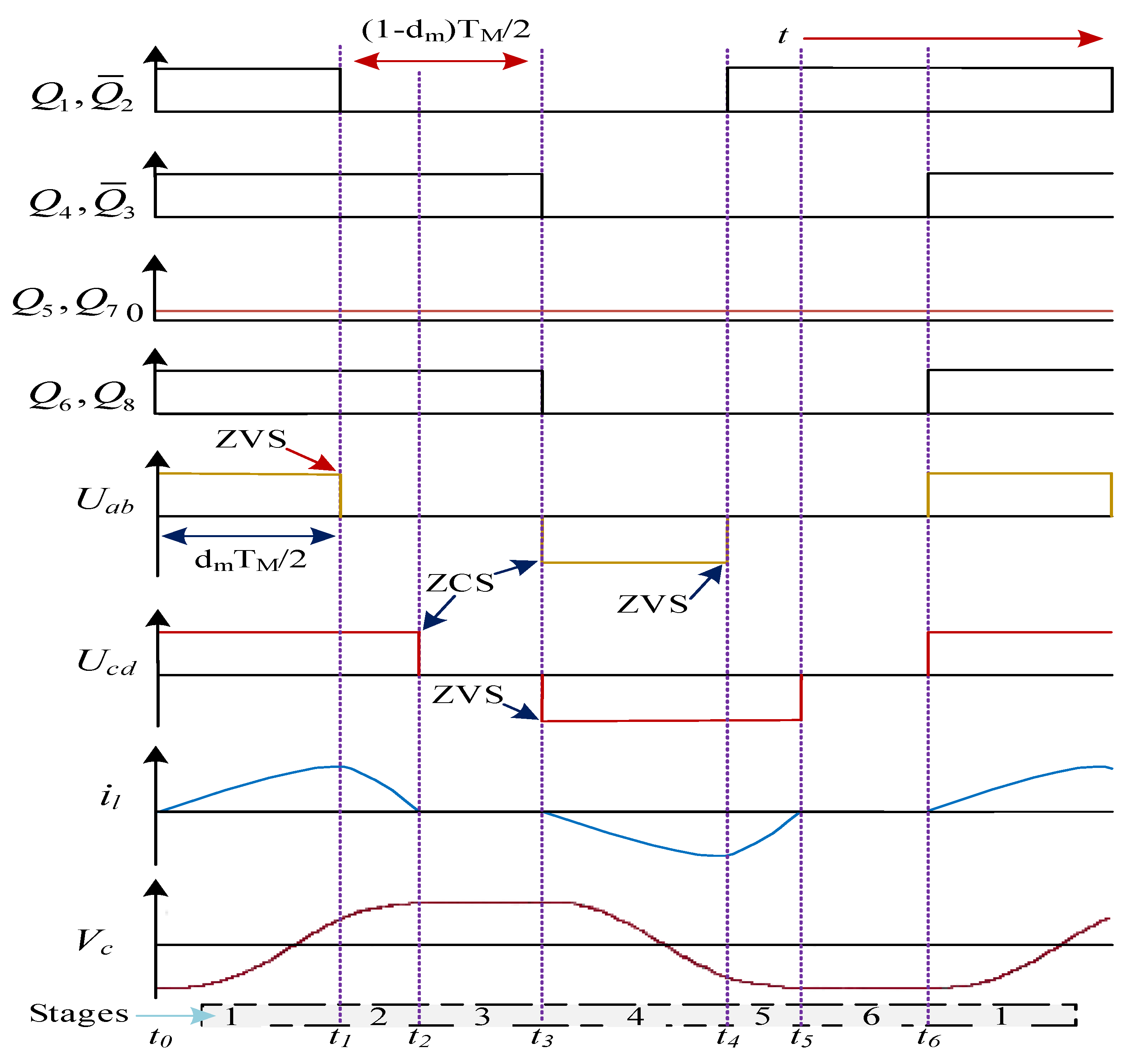
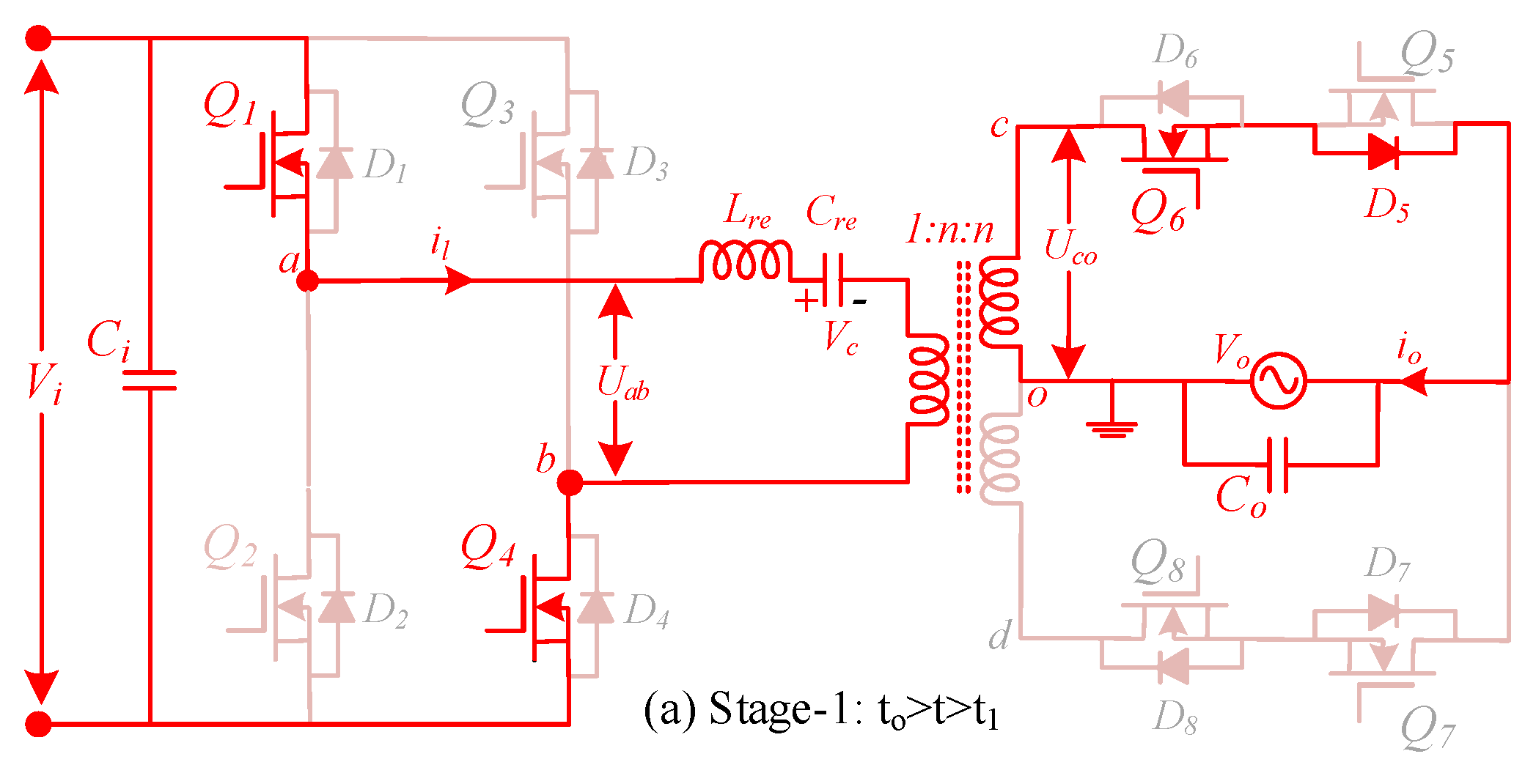
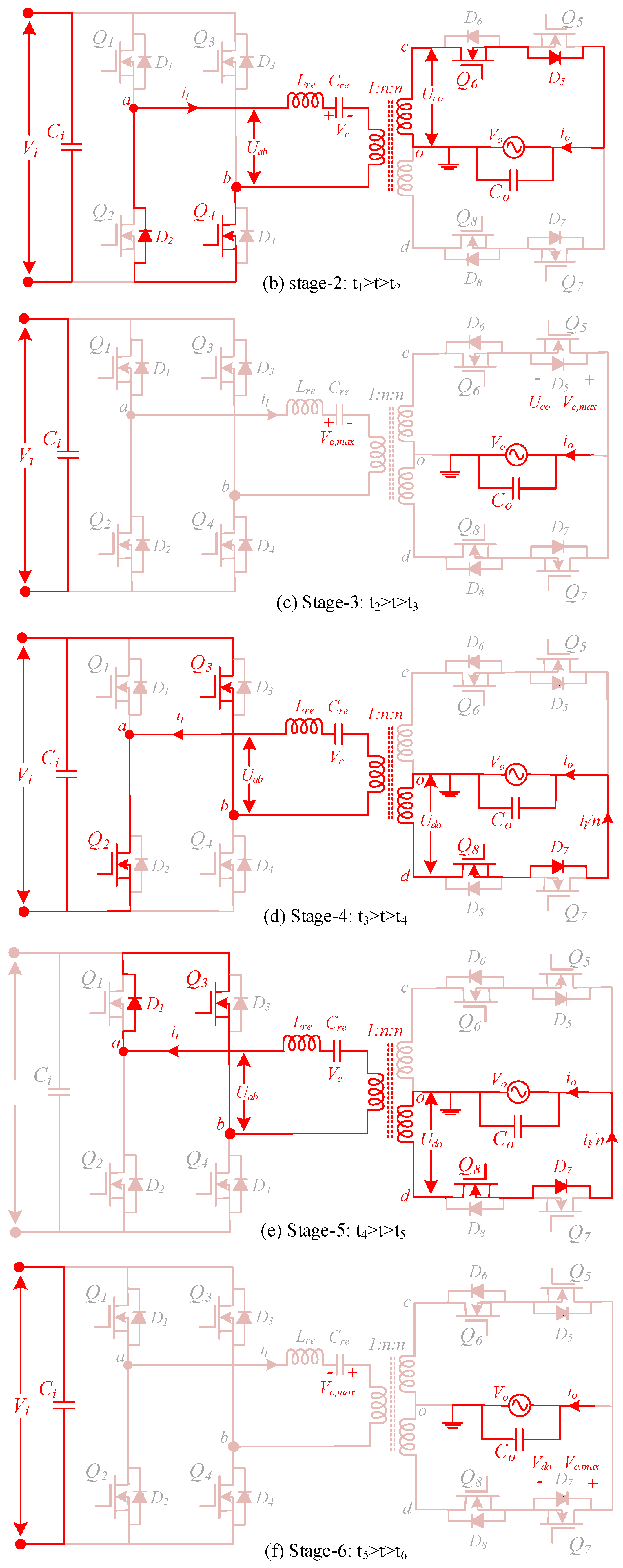

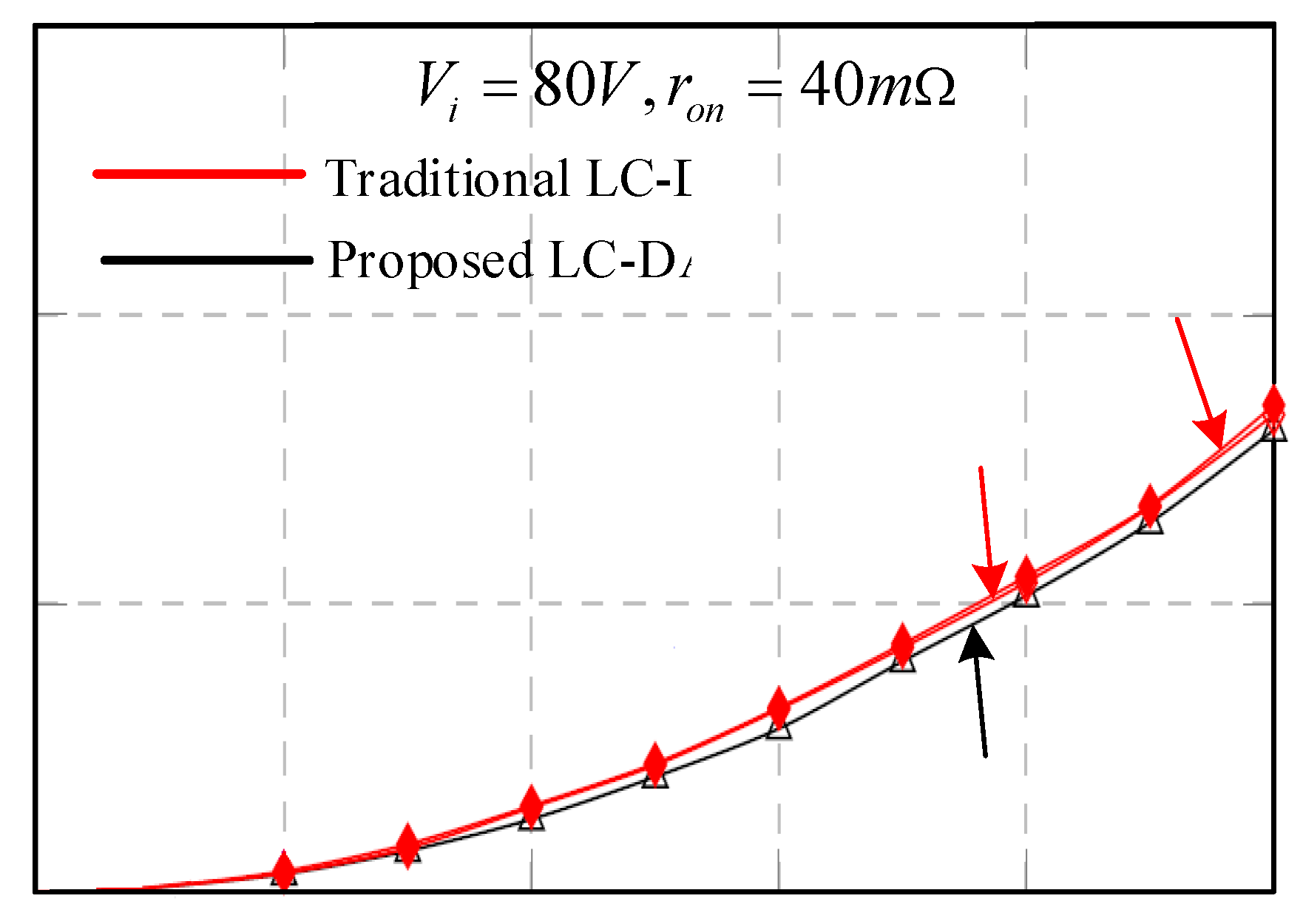
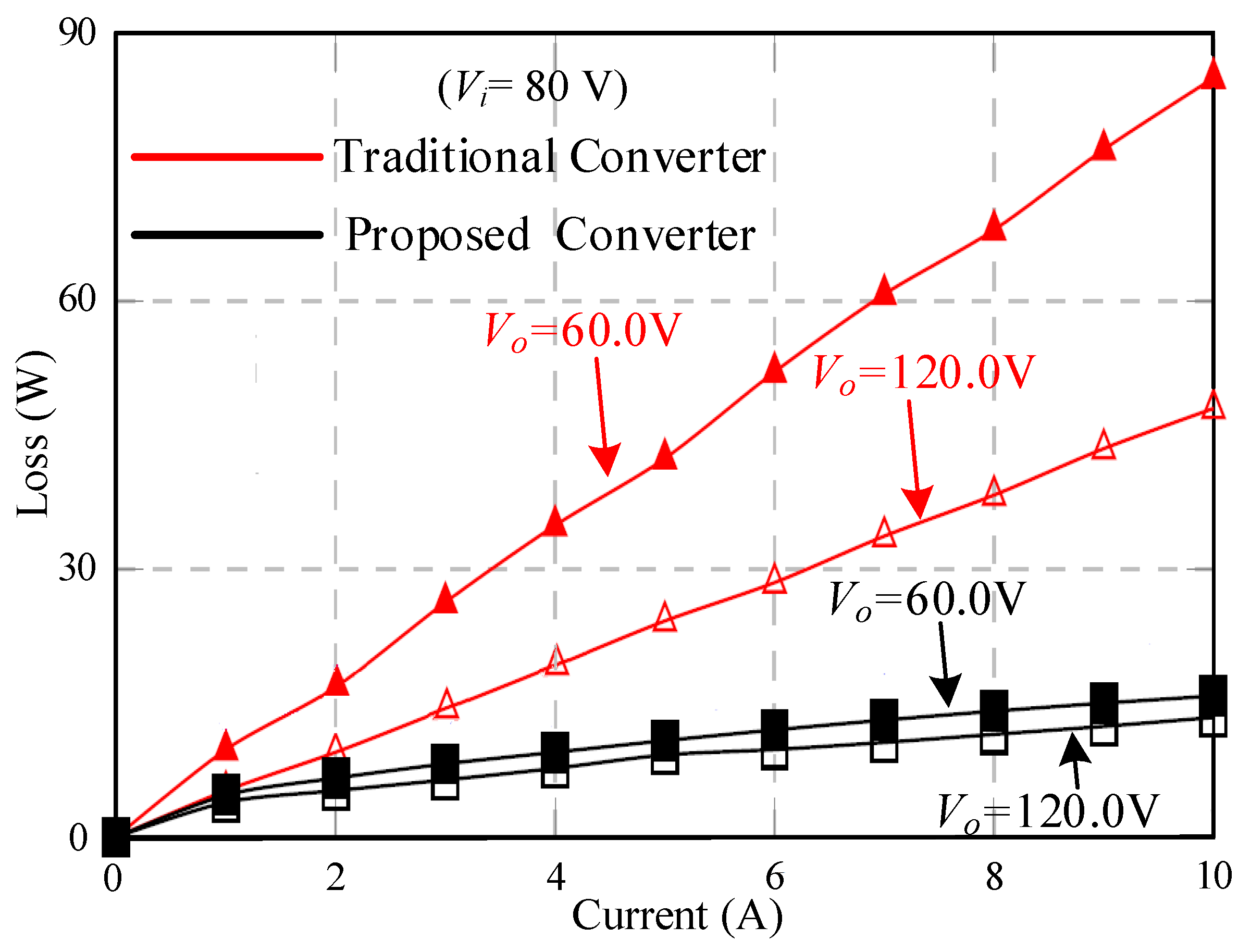

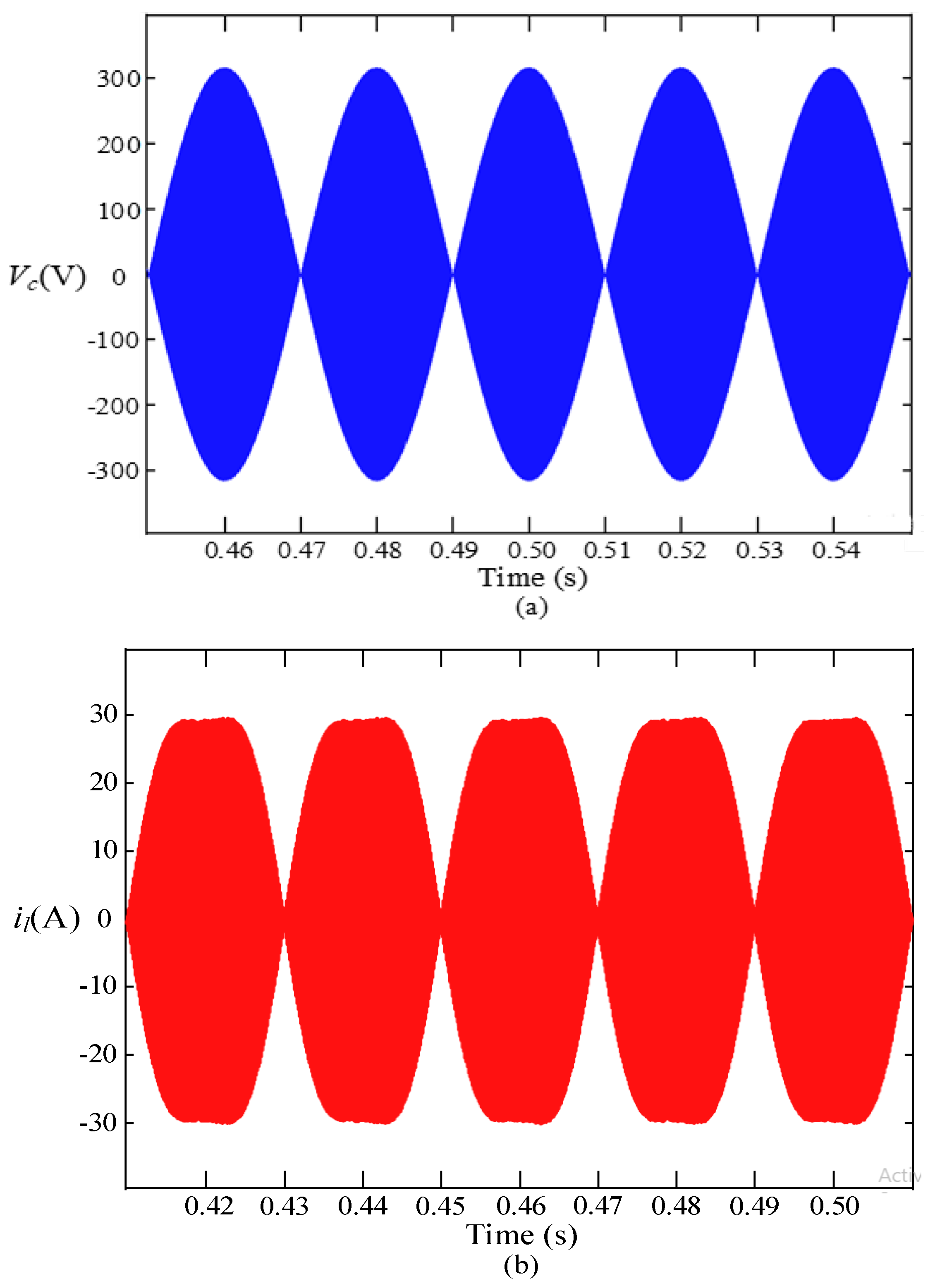
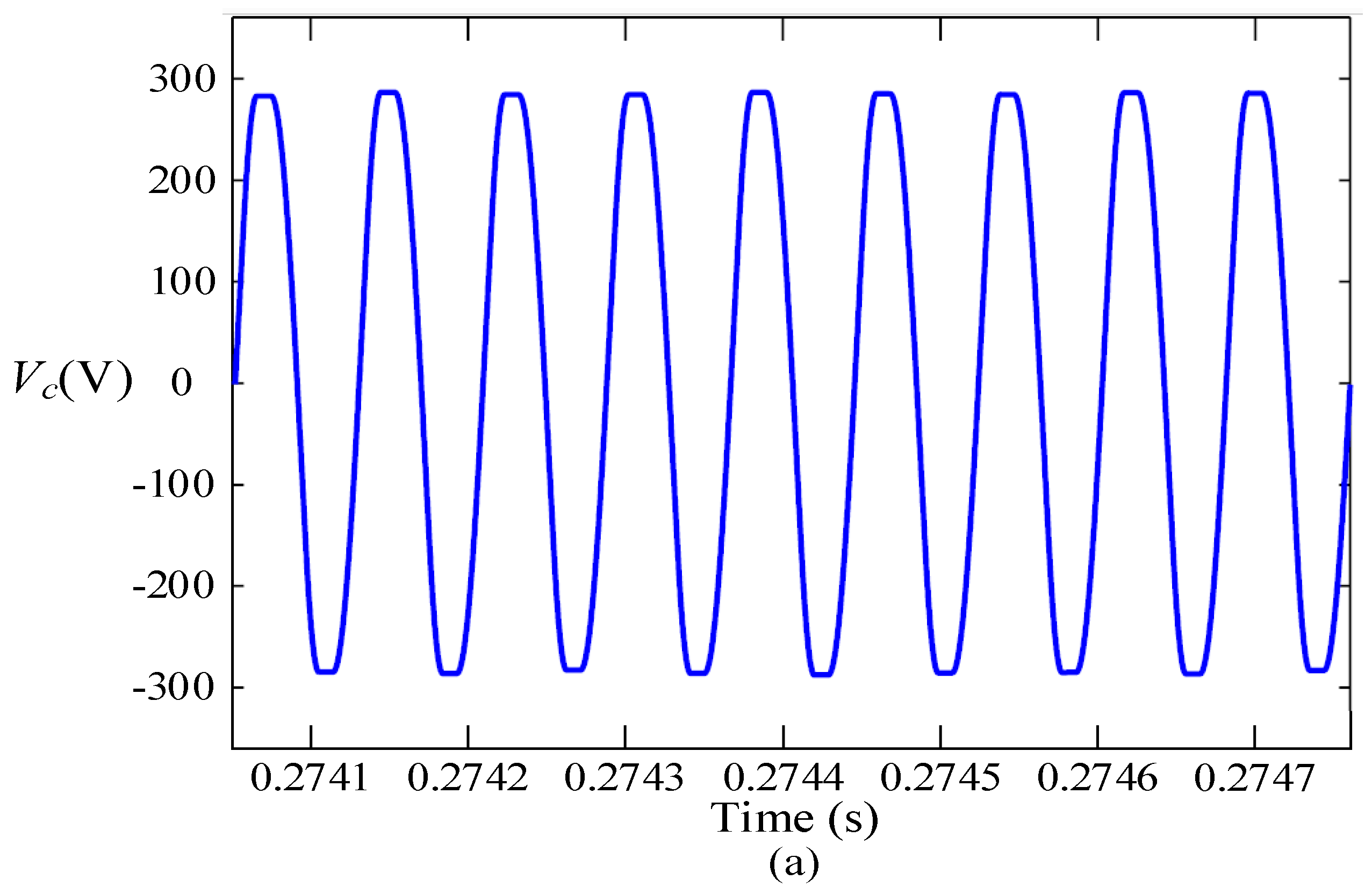
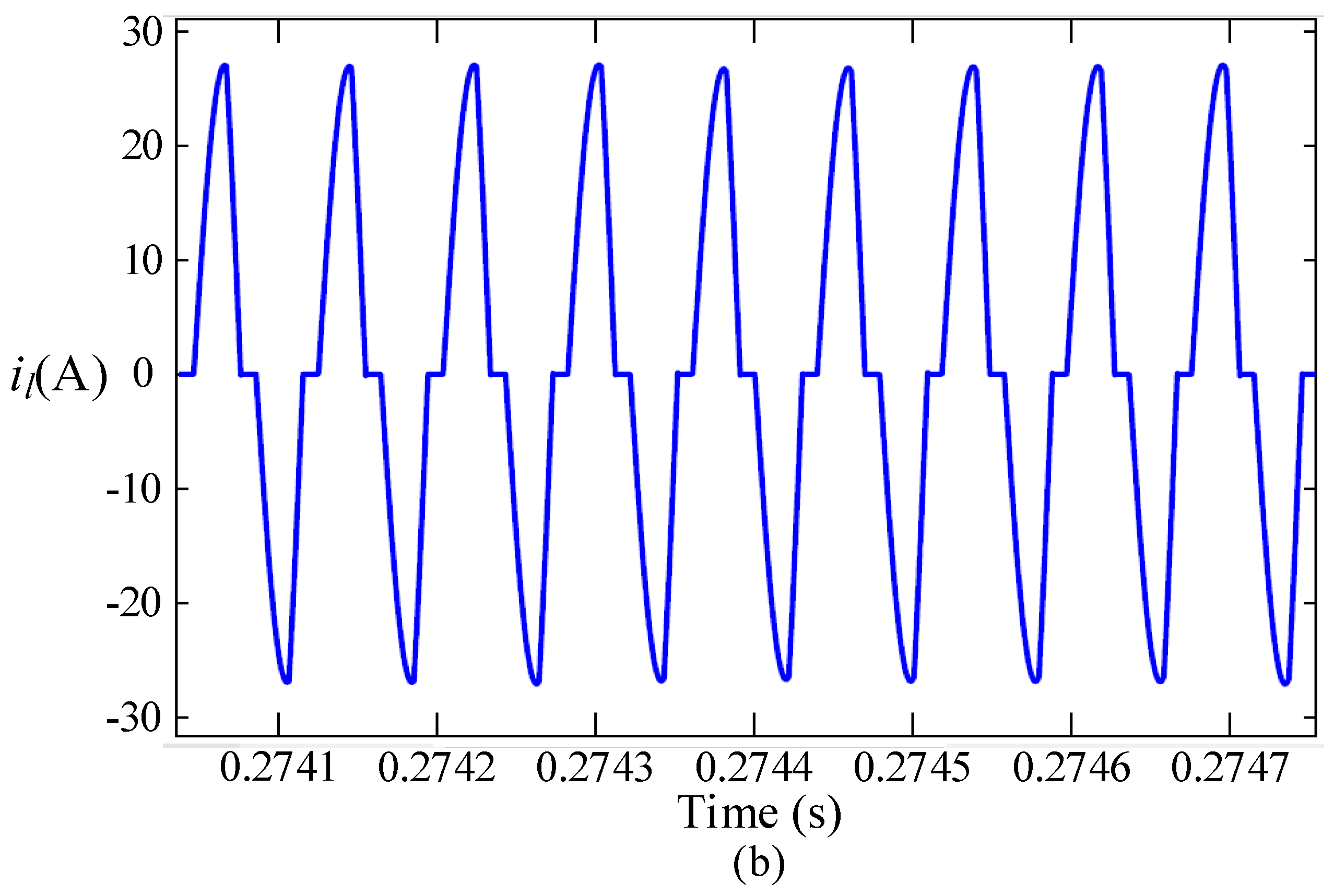

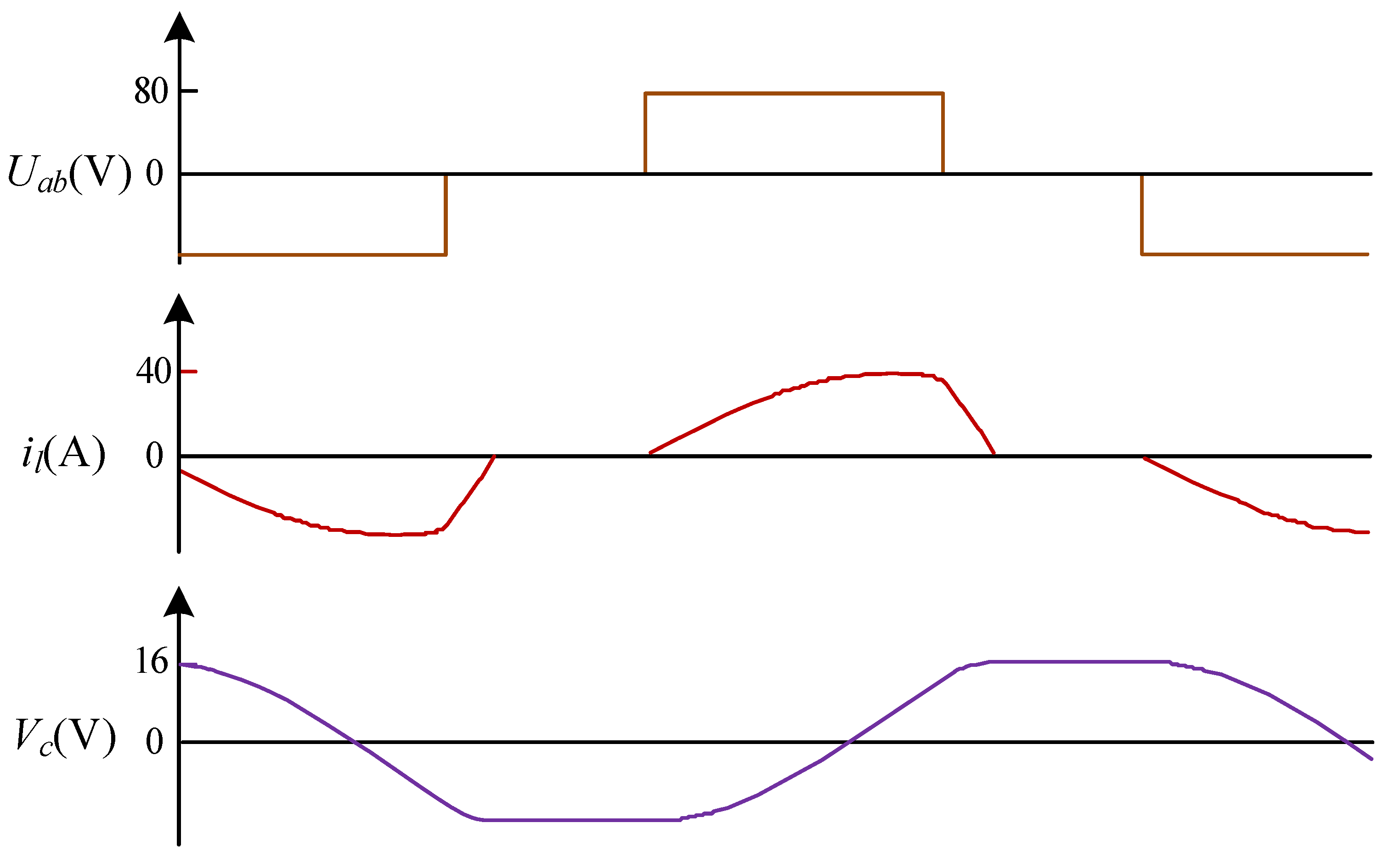
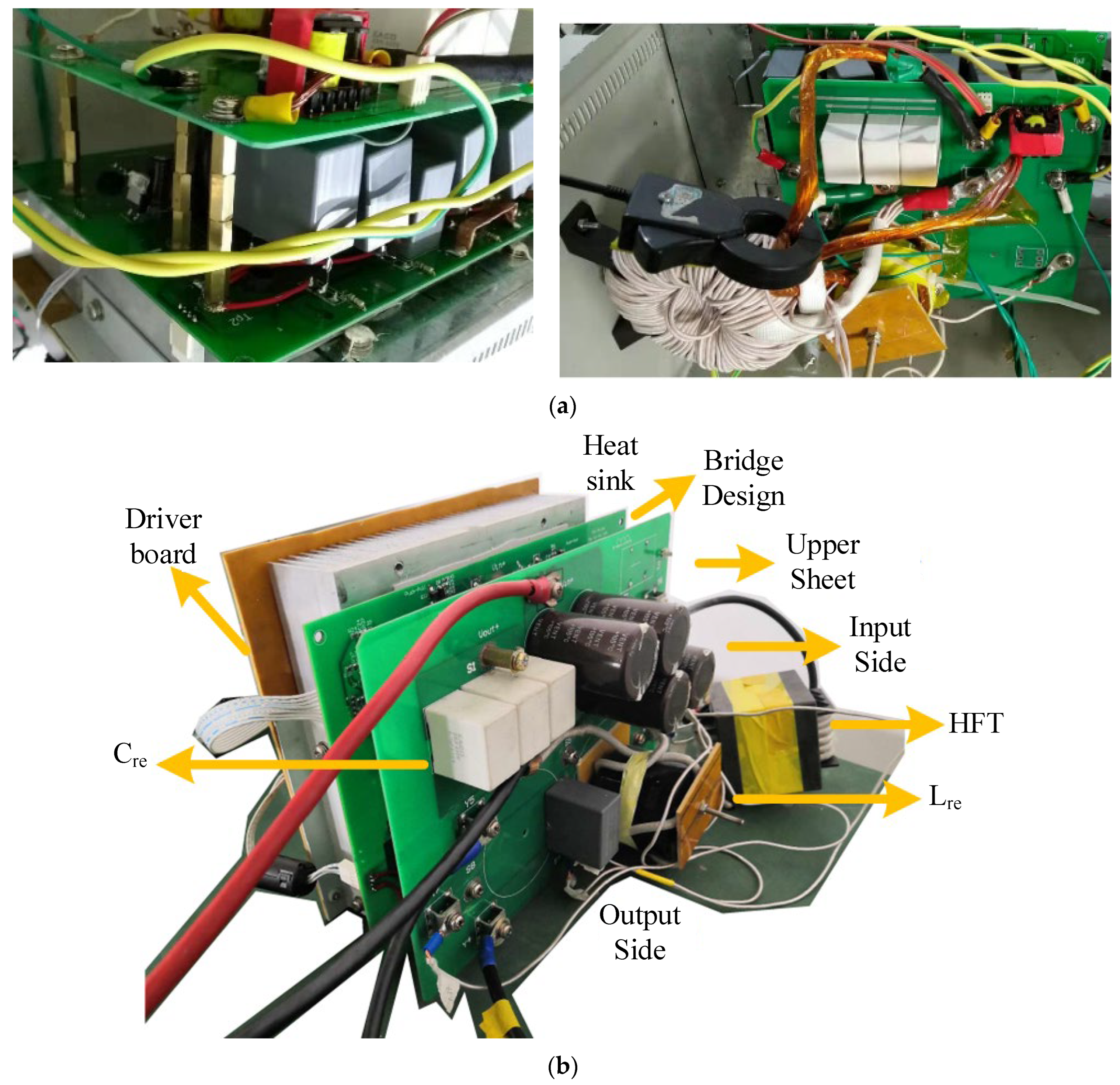

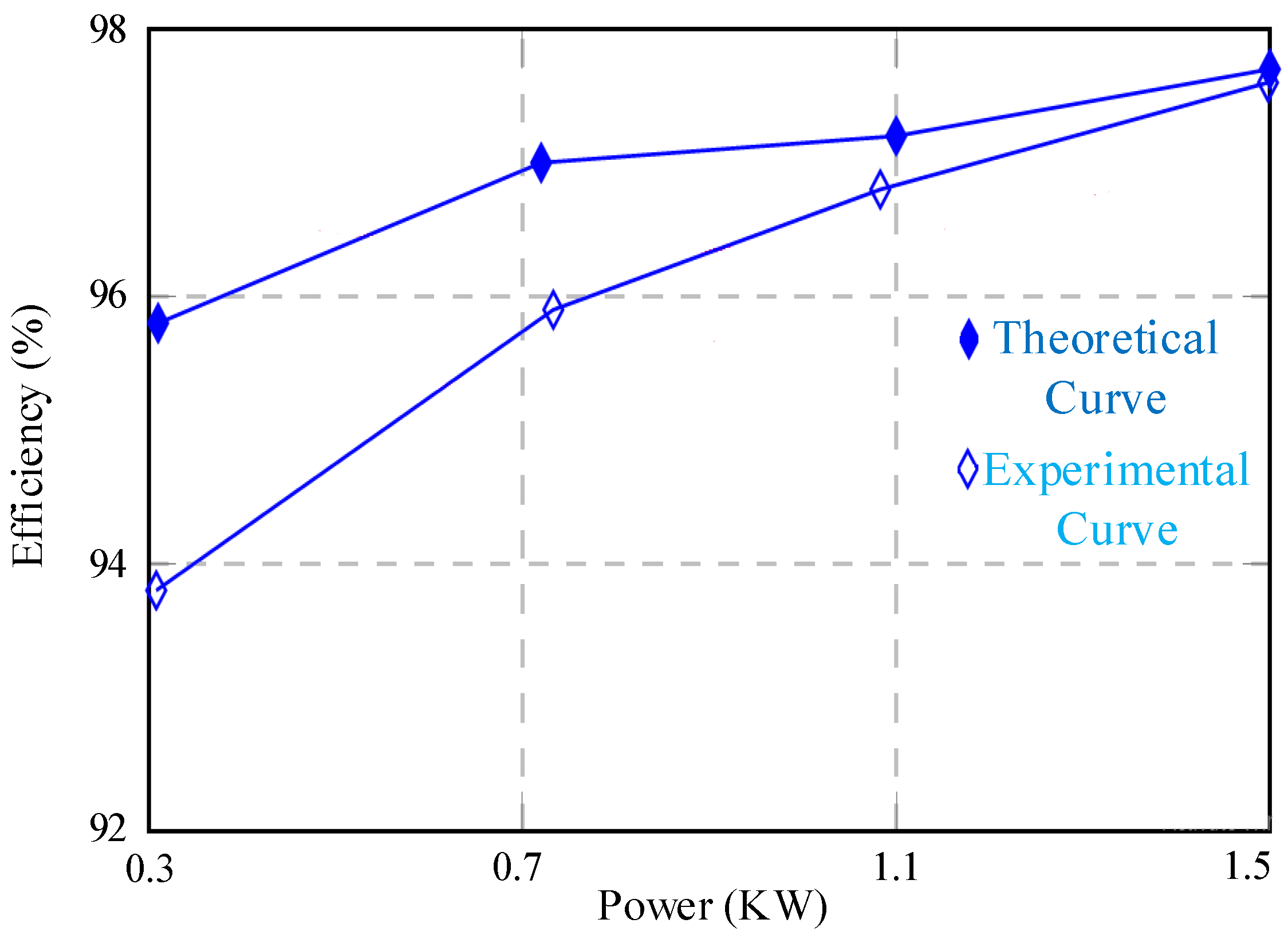
| Converter Types | Backflow of Current | Switching Features |
|---|---|---|
| L-Tank Topology [6] | Allow | soft-switching |
| LC-Tank Existing Topology [13] | Block | hard-switching |
| LC-Tank Proposed Topology | Block | soft-switching |
| Parameters | Conventional LLC [31] | Hybrid Control Strategy [32] | Dual Full Bridge LLC [33] | Proposed |
|---|---|---|---|---|
| Control stability | Simple | Complex | Complex | Simple |
| Control complexity | High | High | High | Low |
| Accuracy of analysis | Poor | High | High | High |
| Components design | Complicated | Medium | Medium | Simple |
| Design method | Simple | complex | complex | Simple |
| Soft switching capability | Narrow | medium | medium | Full Load |
| Parameters | Representation | Values (Unit) |
|---|---|---|
| Input side voltage | Vi | 80.0 (V) |
| Tank inductor | Lre | 160.0 (μH) |
| Maximum Output voltage | Vo,max | 160.0 (V) |
| Tank capacitor | Cre | 1.0 (μF) |
| Output side filter capacitor | Co | 20.0 (μF) |
| Turn ratios | n | 1:2.2:2.2 |
| Regulator Parameters | k | 0.800 |
| (PI-controller) | t | 0.000250 |
Publisher’s Note: MDPI stays neutral with regard to jurisdictional claims in published maps and institutional affiliations. |
© 2022 by the authors. Licensee MDPI, Basel, Switzerland. This article is an open access article distributed under the terms and conditions of the Creative Commons Attribution (CC BY) license (https://creativecommons.org/licenses/by/4.0/).
Share and Cite
Khan, D.; Hu, P.; Waseem, M.; Yasir Ali Khan, M.; Tahir, M.; Annuk, A. Practical Evaluation of Loss Reduction in Isolated Series Resonant Converter with Fixed Frequency Modulation. Energies 2022, 15, 5802. https://doi.org/10.3390/en15165802
Khan D, Hu P, Waseem M, Yasir Ali Khan M, Tahir M, Annuk A. Practical Evaluation of Loss Reduction in Isolated Series Resonant Converter with Fixed Frequency Modulation. Energies. 2022; 15(16):5802. https://doi.org/10.3390/en15165802
Chicago/Turabian StyleKhan, Danish, Pengfei Hu, Muhammad Waseem, Muhammad Yasir Ali Khan, Mustafa Tahir, and Andres Annuk. 2022. "Practical Evaluation of Loss Reduction in Isolated Series Resonant Converter with Fixed Frequency Modulation" Energies 15, no. 16: 5802. https://doi.org/10.3390/en15165802






